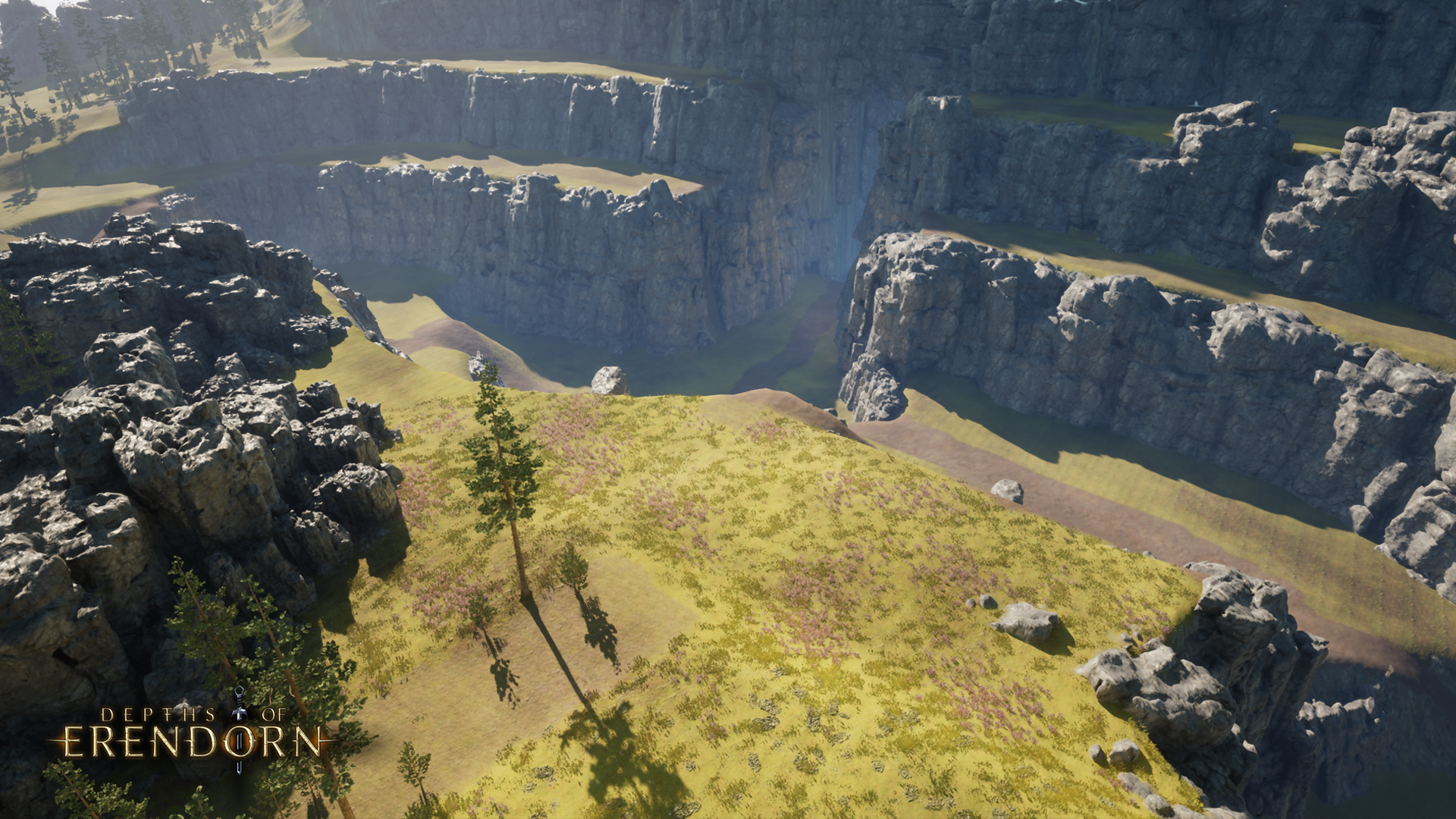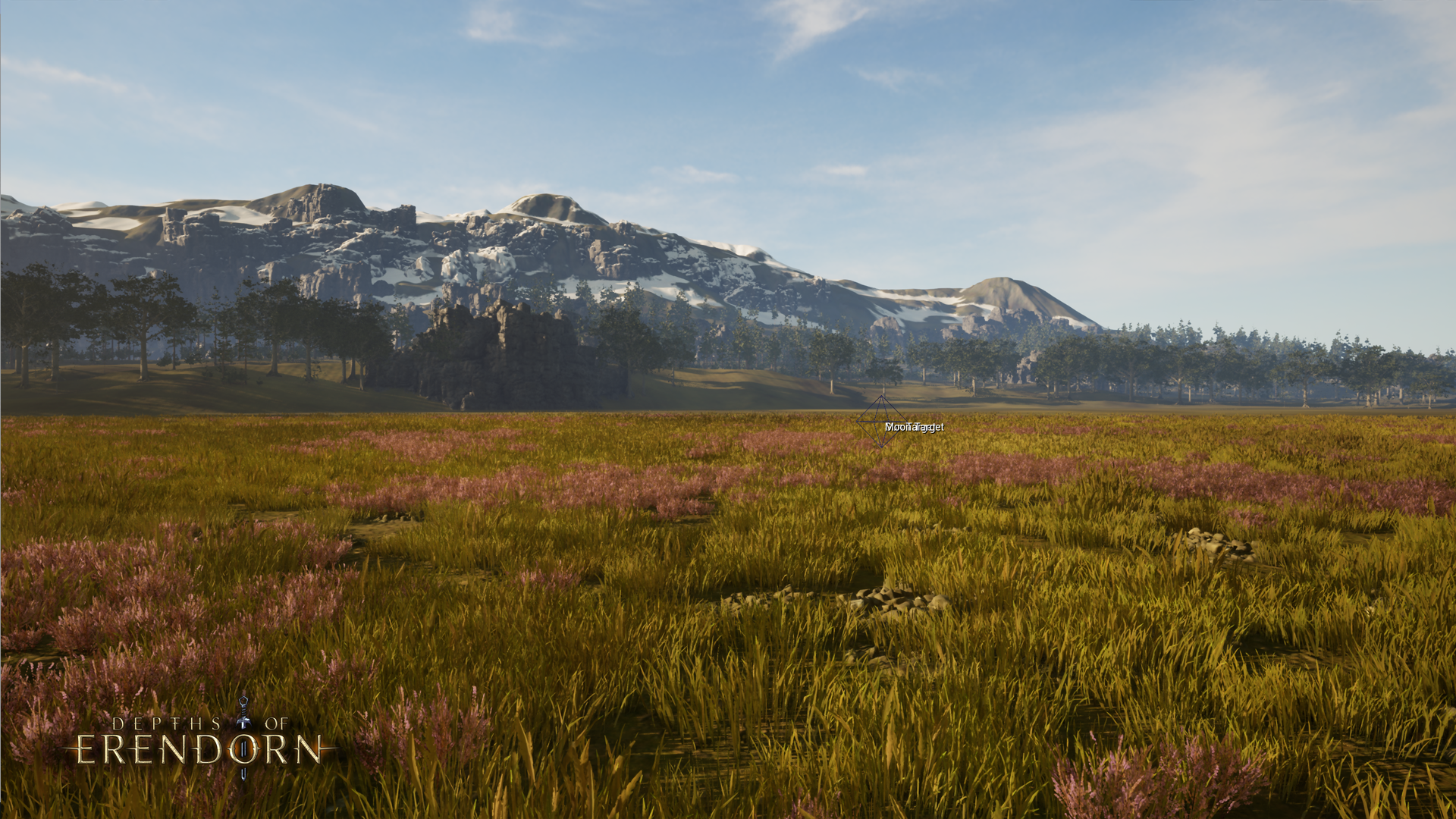This week’s devlog talks about the new VFX we’ve been adding to abilities in the game, how to make a tiling material for texturing a model and how we’ve approached transforming settlements into real-time player hubs. Remember to join us on Twitter, Instagram and Reddit for all our daily updates - now let’s get into it!
3D Character Modelling
After finishing the general sculpt of the male Daggerclaw Harpy in our last devlog, this week we turned our attention to texturing its body. Rather than have these creatures look more humanoid than birdlike, we decided that their bodies should be covered in feathers. The design of this looked awesome in the original concept art for the Harpies, so now it just came down to replicating it in ZBrush.
We decided to make a tiling feather material for texturing the Harpy’s body because this would most successfully achieve the overlapping feather effect. To do this:
- We took an image of a single feather
- We then used Substance Designer to multiply, rotate, position and scale the alpha image
- This created the tiling pattern that we will use to texture the Harpy’s body
- We decided to do this during texturing rather than sculpting
- Doing it at this stage allows us to more easily adjust the body texture according to feedback
Alternatively, if the feathers had been sculpted on, it would not only have taken longer to do but would have also been far more difficult to edit, making it more destructive to our overall workflow.
Once this was all done, we started sculpting the clothes for the Striker Daggerclaw Harpy series. These are particularly lethal and predatory enemies, capable of cutting through the skies at incredible speeds to reach their victims. We’re currently in the process of blocking out the clothes for our Striker, so come back next week to see how they’re coming along!



Character Customisation System
Over the last couple of weeks, our team has been working on getting a character customisation system up and running in the game engine. This system will allow players to customise their character’s facial features, clothing, armour and even their body proportions. We speak about it more in a previous devlog, so check that out first if you want to learn more about it!
After experiencing various problems with this system, we finally managed to fix the main issue that had been halting our progress - don’t worry, we’ll spare you the excruciating details! We were then able to start testing equipment customisation as well as body proportion editing and how this affects equipment.
We tested all of this out on a basic human character model that had previously had all of its meshes bound to the customisation rig, as well as had its skin weights painted for the face and body. A quick animation was also made for the face so that we could really see how everything worked in the engine. There’s still some troubleshooting to be done, but we’re definitely getting there!
Environment Art
This week, we also continued refining the water that will appear in our environments. The water material we previously made was actually converted to triplanar, a method of texturing that allows for the easy resizing of water. Using this method is also beneficial because it gives us the ability to maintain texel density, regardless of the mesh triplanar is applied to. This will mean that our textures will look clean and crisp - who doesn’t want that?!


Visual Effects
More VFX were created for some class abilities this week, using the game’s icons as inspiration for how a particular spell should look. Some of the abilities we focussed on were:
- Nature’s Shield: This is a class spell of the Forest Druid that grants it, or another player of the Forest Druid’s choosing, Resilience for three turns.
- Earthbloom: Another Forest Druid specialty, this ability does nothing on the turn it’s cast - but on the next go, it will actually restore a little bit of Health every turn for three turns.
- Magic Chains: This is actually a generic spell that we started looking at in last week’s devlog. We’re currently trying to get an animation created for it so that we can test the effect properly.
In between all of this, we spent a lot of time this week making sure that prefabs were set up properly since a lot of them had lost their connections with the VFX. We also did some spring cleaning, like removing unused textures on materials and resizing other textures that were unnecessarily big.
We also made some VFX for generic skills, like Spinning Kick and Heaving Blow. The active player of a game now also has a visual effect that appears around their character. We decided to represent the active player by making an illuminating white circle that rotates and pulses on the tile, creating a simple yet ethereal look.



Programming
Plans for adding free movement to players inside settlements were discussed this week, supported by conversations on the technical side of how we aim to do this. Our plan is to have the settlements in Erendorn act as player hubs that update in real-time. To achieve this, we’re looking at what new potential methods and technology we can use to create a better out-of-dungeon experience.
We started by exploring network navigation solutions for real-time, replicated player characters on terrain-based environments. This will work differently to how we network the game itself, so we’re currently looking at ways of getting more precise information on players and their interactions while inside settlements.
We are also specifically looking at terrain-based environments because at the moment, movement in the game is only possible on a flat grid. We’re planning to take advantage of the Unity AI component, NavMesh. With this, we will be able to calculate and validate player movement on the client and server respectively, as well as on terrain of varying heights. With all of this work, we feel confident that we’re heading in the right direction!
As always, there were several bug fixes made this week. We:
- Stopped dead entities from being targetable by active players
- Stopped players from being able to spawn before a map vote has been decided
- Stopped players from being able to spawn on unwalkable tiles (including entities)
- Stopped the ‘End Turn’ button from being partially blocked to clicks
There was also a lot of work done on abilities this week. The Earthen Dwarf’s Rage ability, for example, was re-implemented into the game in a new form that displays duffs. This will make the effects of Rage more noticeable and understandable in the game, and we are currently testing how it functions. Other abilities we worked on this week include:
- One With the Earth: Another class ability of the Earthen Dwarf that restores Health and grants Resilience for one turn. This should now retain the Resilience gain for the correct duration.
- Unique Blessing: A generic spell that grants Strength and Resilience to a team member for three turns, this ability should now last the correct number of turns.
- Master of Magic: This is a new passive ability for the Parakaw, giving this lucky character a 30% chance to have 30% of the Mana cost restored when casting a spell.
The final bit of work done in this area was adding a new ability block that would reapply the effects of a given ability. We then finished off the week with a few miscellaneous tasks:
- We helped with the water shader implementation that our Environment Artist was doing
- We applied new water tiles to the room builder so that we could start showing water in the game
- We implemented a new set of functions that allows us to get the angle between entities and points
- We added helper functions that would then turn angles into compass directions, and vice versa


That wraps up our week! Thanks for joining us for another weekly devlog - and if you’re new, you can also access our monthly devlog summaries if you want to catch up on what we’ve been doing!








